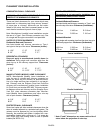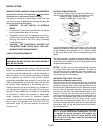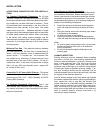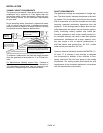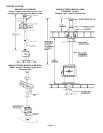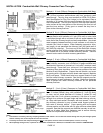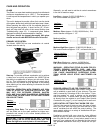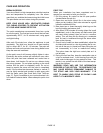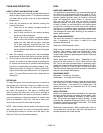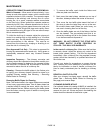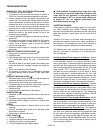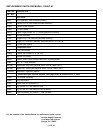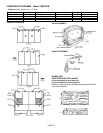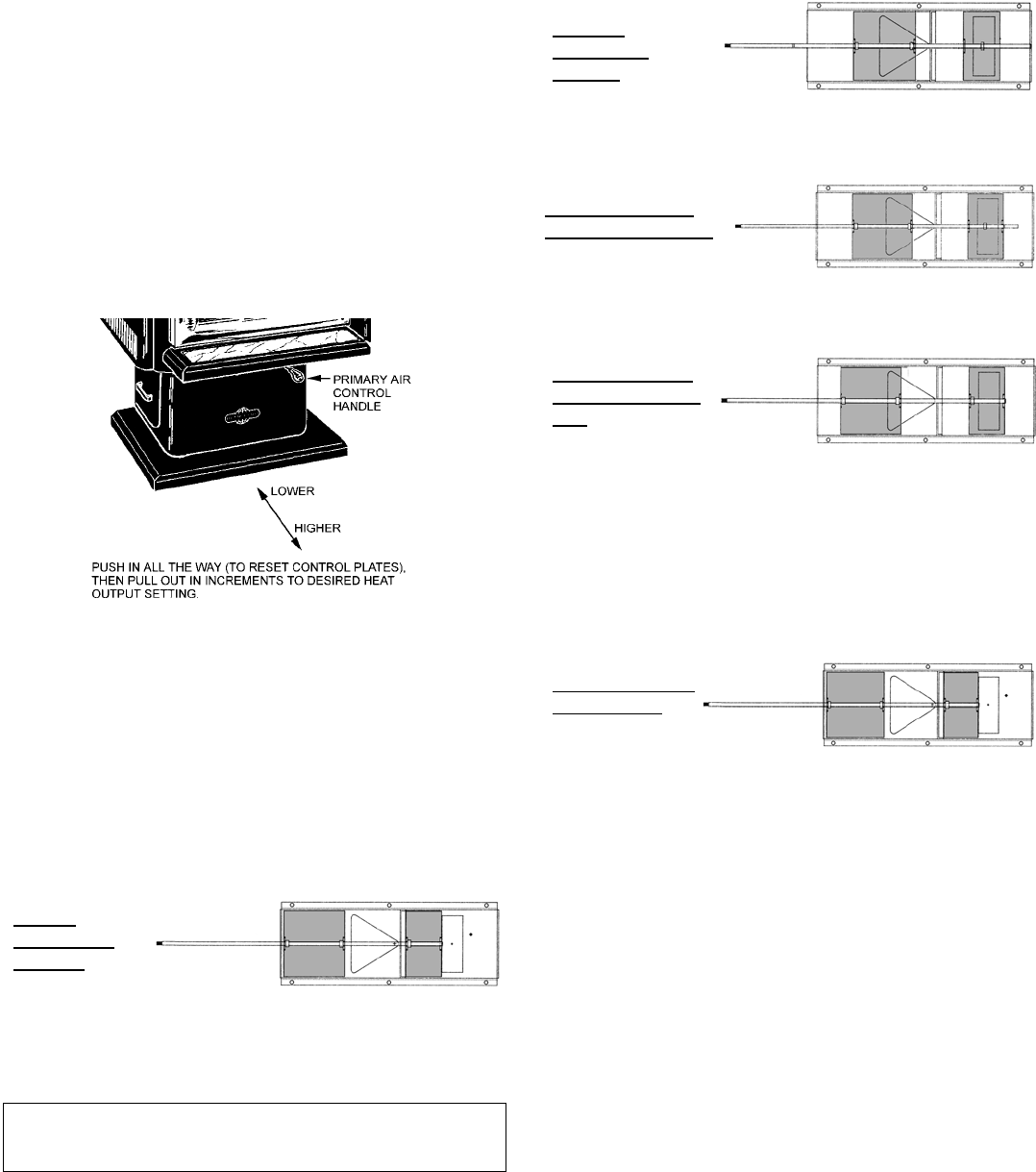
CARE AND OPERATION
PAGE 14
GLASS
The Glass is a super heat resistant ceramic that withstands
continuous temperatures up to 1390° F. This temperature
is well beyond the temperatures in which you operate your
stove.
This unit is designed to provide a flow of air over the inside
of the glass, where along with high heat helps keep it clean.
When operating the stove on low for extended periods of
time, the glass may get dirty. A short, hot fire (15 - 20 min-
utes) will help clean off much of the normal buildup (see
Troubleshooting, page 19). A commercial glass cleaner
designed for stoves is recommended for cleaning.
The glass should be cleaned thoroughly with glass
cleaner and a soft cloth BEFORE the stove is burned.
PRIMARY AIR CONTROL
The Model 1900HT-M has one combustion air control
located under the ash lip.
Start-up: To provide sufficient combustion air to achieve
a clean burn as quickly as possible, the 1900HT-M has
the ability to supplement its primary air with extra "Start-
Up" air. This is achieved by pulling the air control rod all
the way out, and should only be adjusted to this setting
when starting a fire, when refueling or otherwise for short
duration’s only.
CAUTION: OPERATION WITH PRIMARY AIR CON-
TROL IN "START-UP" POSITION (PULLED ALL THE
WAY OUT) FOR EXTENDED PERIODS, WASTES
FUEL AND CAN CAUSE DANGEROUS OVERFIRING
CONDITIONS. NEVER LEAVE STOVE UNATTENDED
ON HIGH SETTINGS.
Adjusting Burn Rate: The primary air control handle
can be pulled out to the open position for higher tem-
peratures and moved in to a more closed position for
lower temperatures.
IMPORTANT: Push air control all the way in (closed)
before pulling rod out to set desired burn rate. This
clears the high burn control plate so it is not left open.
Generally, you will want to set the air control somewhere
in the low or medium range.
Low Burn - (approx. 9,000-13,000 Btu/hr.).
Pull control handle out approx. 3/4”.
Medium - Burn (approx. 13,000-16,000 Btu/hr.). Pull
control handle out approx. 1 1/2”.
Medium-High Burn (approx. 16,000-25,000 Btu/hr.).
Pull control handle out approx. 2 1/2”, until small click is felt.
High Burn (Maximum – approx. 44,000 Btu/hr.)
Pull control handle out to its full extended position.
WARNING: OPERATING STOVE ON HIGH FOR EX-
TENDED PERIODS WASTES FUEL, AND WILL
CAUSE A WHITE BUILD-UP (HAZE) ON GLASS AND
CAN CAUSE DANGEROUS OVERFIRING CONDI-
TIONS. NEVER LEAVE STOVE UNATTENDED ON
HIGH.
PROVIDE ADEQUATE AIR FOR COMBUSTION
In well insulated and weather tight homes, it may be diffi-
cult to establish a good draft up your chimney. The poor
draft is caused by a shortage of air in the house. To pro-
vide the needed air, crack a window on the windward
side of the house. In some cases, you may want to duct
air directly from the outside to your firebox (See Outside
Combustion Air, page 7), or to a nearby floor or wall vent.
USE CONTROL SETTINGS THAT WORK FOR YOU
The fuel, the amount of heat you want, the type of instal-
lation you have and how long you wish the fire to burn
are all variables that will affect the control setting. The
same control settings in a variety of installations will pro-
duce different results.
Familiarize yourself with your stove by trying different
settings so you can learn how much heat to expect and
how long the fire will burn. It may take a week or two to
learn but your patience will be rewarded by the warmth
and pleasant satisfaction that only a wood fire can pro-
vide.
Low Burn
Control Plate
Positions
Medium-Low Burn -
Control Plate Positions
Start-up
Control Plate
Positions
Medium High Burn
- Control Plate Posi-
tions
High Burn - Control
Plate Positions



